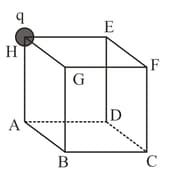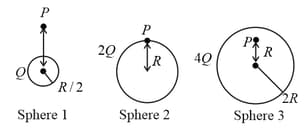EASY
JEE Main/Advance
IMPORTANT
Earn 100
There is a non-conducting rod of length and negligible mass with two small balls each of mass and electric charge attached to its ends. The rod can rotate in the horizontal plane about a fixed vertical axis crossing it a distance from one of its ends. A uniform horizontal electric field (along axis) is established. At first the rod is in unstable equilibrium. If it is disturbed slightly from this position, what would be the angular frequency of SHM in the above question?
(a)
(b)
(c)
(d)
50% studentsanswered this correctly

Important Questions on Electric Charges and Fields
EASY
JEE Main/Advance
IMPORTANT
The force of repulsion between two point charges is , when they are distance apart. If the point charges are replaced by conducting spheres each of radius $r$ and the charges remain same. The separation between the centre of sphere is , then force of repulsion between them is
MEDIUM
JEE Main/Advance
IMPORTANT
Two identical small bodies each of mass and charge are suspended from two strings each of length from a fixed point. This whole system is taken into an orbiting artificial satellite, then find the tension in strings
EASY
JEE Main/Advance
IMPORTANT
Two points charges and are separated by distance , where should a third point charge be placed that it remains in equilibrium
MEDIUM
JEE Main/Advance
IMPORTANT
Which of the following is true, when a dipole is placed in non-uniform electric field?
EASY
JEE Main/Advance
IMPORTANT
Which of the following is true for electric flux through a Gaussian surface?
MEDIUM
JEE Main/Advance
IMPORTANT
A point charge of is placed at a distance directly above the centre of a square of side The magnitude of the flux through the square is
EASY
JEE Main/Advance
IMPORTANT
A small spherically symmetric charge is placed at one vertex of a cube as shown. The flux through the faces and are, respectively,

MEDIUM
JEE Main/Advance
IMPORTANT
Charges and are uniformly distributed in three dielectric solid spheres and of radii and respectively, as shown in the figure. If magnitudes of the electric fields at point P at a distance R from the centre of spheres and are and respectively, then

